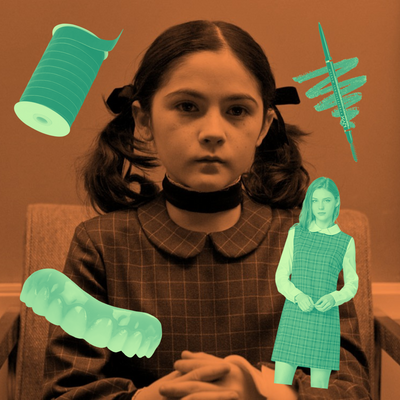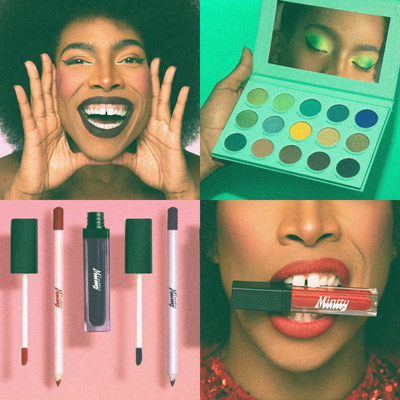Trigger warning: Please be mindful that the following article contains content surrounding rape and sexual violence.
When Kyle Walker was raped at 18-years old, he decided he’d keep the clothes he wore that night.
Just in case he ever needed it for proof. In the feint chance that one day he’d build up the courage to find justice. And so he hid the bag in the trunk of his car.
It was six months after the attack that he went to the sheriff’s office in his small town in Kentucky. Bag in hand, he was determined to file a report against his alleged assailant, a beloved doctor who so happened to work at the local hospital.
Facing detectives, Kyle was told he’d waited too long and that they couldn’t trust that the clothes weren’t being used as a set-up. There was nothing they could do for him. In addition to the detectives’ predisposition in believing in the innocence of his accused rapist, they were also “really uncomfortable” with that fact that the rape victim in question was male. “They didn’t know how to handle that,” he tells Very Good Light.
“I looked so bruised and broken, and shattered. I literally felt like my body shattered all over the floor.”
While men are less likely to talk about or report sexual assault, it’s common. According to the National Sexual Violence Resource Center, one in six men have been sexually assaulted or abused. Since women are statistically more likely to be victims, the conversation surrounding sexual abuse is female-centric and resources geared towards male survivors are limited. There are also the stigmas associated with being a male survivor, which forces many men to struggle with recovery and identity in distinct ways. This makes their voices and stories all the more important in the narrative surrounding rape and sexual assault altogether.
‘It completely blindsided me’
Today, Kyle is a 22-year-old bartender and server happily living in Chicago with his partner. But it was just four years ago that he went on the date that changed his life.
“It was actually the second date,” he remembers. “I thought things were going pretty well. I was at his house watching TV and cooking dinner. It was pretty relaxed.”
When Kyle arrived for dinner, his date was already drunk and as the night went on he got increasingly adamant about wanting him to stay the night. When Kyle refused, his date went into a violent rage.
“I got my shoes on and I was pulling my hoodie over my head,” he says over the phone. “That’s when I was grabbed from behind. He put a rag over my nose.”
Drugged with what Kyle assumes was chloroform, he passed out. Throughout his alleged assault, he regained consciousness three times to bear witness to his rape. “He kept putting the rag back over my face and when I finally woke up, it was because he was drunk and passed out beside me.”
Like 80-percent of rape victims, as reported by the National Sexual Violence Resource Center, Kyle’s alleged perpetrator was someone he knew. “I honestly didn’t see it coming at all,” he says. “We went on one date in public, and I felt more secure in going back to his house on the second date, which was a week later. It completely blindsided me.”
When Kyle finally regained consciousness and his alleged abuser was passed out, he went to the bathroom trying to figure out what happened to him. “I looked up and saw this monster looking back at me in the mirror. I looked so bruised and broken, and shattered. I literally felt like my body shattered all over the floor.” As quietly as possible, he collected his belongings, and drove away.
This image of a broken man in the mirror is a far cry from the person he is now, sharing his story with courage and conviction. A month prior to his assault, he’d been kicked out of his home for being gay. He was finishing up high school, living in his own apartment and supporting himself as a manager at a fast food restaurant. Without support and feeling completely alone, the recovery process for Kyle wasn’t easy.
“It took me the longest time to even look at myself in the mirror [again],” he tells Very Good Light. “I was so perplexed when I saw the bruises and the scratches and the chemical burns that were on my face. When it happened, I took down the mirrors in my bathroom and my room. I just really struggled to even look at myself and be comfortable in my skin.”
In fact, it would take him six months before he could even admit to himself what happened.
‘Honey, you’re a guy, you can’t get raped’
When he finally felt brave enough to report the alleged assault, he was met with disdain.
“It was really demeaning,” he recalls. “Even my girlfriends were like, ‘Honey, you’re a guy, you can’t get raped.’ What does that mean? Everybody can be raped. Males can be raped by females. It’s not just a gay thing. It’s the fact that a man can be raped and it happens every day.”
It’s this experience – of feeling unheard – that ultimately pushed Kyle towards advocacy.
“In Kentucky, being gay wasn’t well accepted, and neither was me speaking out about my abuse.”
Even in the face of threats from his accused rapist, Kyle persevered. “I was told to quit talking about it; to quit running my mouth or I’ll get a slander charge against me. That was my breaking point. I was tired of being quiet because I’m not a quiet person.”
‘I didn’t identify what was going on as sexual abuse’
Much like Kyle, Nate Postlethwait’s acceptance was the first step to recovery. At 41-years old, he’s still processing the sexual abuse he endured as a child.
“There’s such a disconnect between trauma when you’re a child,” says Nate to us. “I believed on some level that what happened was not abuse.”
He was just 5-years old the first time he was assaulted by an alleged abuser 24-years his senior, with the assaults continuing for years.
“I had this default to shame,” he says. “My abuser would constantly tell me that he wants to do these things, and that I seem to enjoy them. He would use the situation to make sure I felt responsible for everything that was going on.”
When it comes to sexual trauma, gendered notions about masculinity also contribute to a potentially unwelcoming environment for male survivors who might need help.
It worked, because Nate still didn’t identify his own situation as abuse, even when he was old enough to comprehend what the word meant. That disconnect defined a good deal of his life.
“It trapped me for all of my 20’s,” he says. “I didn’t have the appropriate help for the first decade, so I wasn’t actually addressing the trauma.”
His experience and shame weighed down on him until he finally got the therapy he needed in his early 30’s.
“When I was going through my darkest hours of processing all the pain, I just felt incredibly alone,” he says. “I walked around thinking there’s this world of whole, pure, clean people and I was just one of the lower-level humans because I have this story and this thing about me that really brings a darkness to life.”
As he’s healed, Nate has dedicated his life to helping other people heal, too. He quit his career in real estate to start a blog and podcast called The Other Side of Saved, which provides a community for survivors to tell their stories. He’s come to recognize that as a male survivor, living his truth and sharing his experiences helps combat stigmas and allows other men to do the same. To him, that is the essence of recovery: “Living out in full transparency and authenticity, while owning the story and not having shame attached to it.”
Healing and recovery isn’t one-size-fits-all
While therapy is a potential route for survivors to seek as they look to work through their recovery, some men simply don’t feel comfortable going.
“Research shows that two-thirds of outpatient appointments in therapy are for women while one-third are for males,” says Dr. Jessica Pae, a Colorado-based licensed psychologist.
“Although men struggle with mental health problems, they are less likely to receive help.”
“The fundamentals of therapy follow more stereotypical feminine values,” adds Rick Goodwin, founder and Clinical Services Director of Men and Healing, a Canadian agency that provides a male-centered approach to therapy. “We expect people to be vulnerable and disclose personal experience, and articulate feelings. For those reasons, we don’t see lots of guys in treatment.”
“Most centers are ill-equipped to deal with male survivors.”
When it comes to sexual trauma, gendered notions about masculinity also contribute to a potentially unwelcoming environment for male survivors who might need help.
“The explicit messaging from sexual assault and rape centers is that women are the victims and men are the perpetrators,” says Goodwin. “Stereotypically, people think of offenders as male, and as a culture, we have a feminization of victimhood.”
Goodwin also says that stereotypical representations of masculinity boil down to being invulnerable, and if you’re invulnerable then you can’t experience victimization.
“That is the crux of the issue, and it doesn’t allow men to speak of their experiences because it doesn’t fit with our expectations of them.”
For men of color, the lack of access to resources and adequate help is exacerbated.
“There are less resources for minority patients, as well as more stigma around mental health issues,” says Dr. Pae, who explains that research has shown that if there is an ethnic match between patients and providers (both minorities), then the treatment outcomes are significantly better.
The issue, however, is that there aren’t many providers of color, meaning that “patients can experience microaggressions from white providers, which causes them to not engage in therapy or leave therapy before they’re ready,” she says.
Since men are less likely to share their stories of assault and abuse due to gender barriers, most centers are ill-equipped to deal with male survivors, which is what Kyle says he experienced.
“The centers in Kentucky aren’t welcoming of male assault victims because they haven’t had one,” he says.
He says that the center he visited catered to women and children, and he was told that he couldn’t do group therapy because the women seeking help weren’t comfortable being around men. He was understanding of that, and decided to try one-on-one therapy, but that didn’t go well either.
“Instead of treating me like a woman, they treated me like a child,” he explains. “They tried giving me coloring books to color and express my feelings.” It wasn’t until he moved away that he was able to get any adequate sort of treatment.
Both Goodwin and Dr. Pae agree that treatment and healing are individualized, with recovery being the end goal. According to Goodwin, the process has two components: recognizing that there can be absence of symptoms, such as depression, anxiety, insomnia, or emotional rage and working to find the authentic self. “It’s much deeper than just symptom recovery. It’s up to the individual what they want to shoot for,” he says.
Speaking up makes a difference
After their alleged assaults, both Kyle and Nate are authentically living their lives and sharing their stories free of shame. They’ve both experienced firsthand how being open about their truths pushes other men to feel comfortable to do the same.
Despite the challenges facing male survivors, Nate is hopeful of the progress. Compared to 23-years ago when he first started therapy, there are so many more resources and conversation around it. For him, movies like Spotlight and men, like actor Terry Crews, speaking out about their assault shows that these issues are becoming a part of the conversation.
“It’s really bringing a lot of light and validity to what we’re talking about,” Nate says. “It’s forcing the psychiatric community to get educated quickly to know how to address these things.”
If you have been a victim of sexual assault, know that there are resources for you. The Rape, abuse, and Incest National Network (RAINN) operates the National Sexual Assault Hotline (800.656.HOPE) and partners with thousands of sexual assault service providers across the country.






